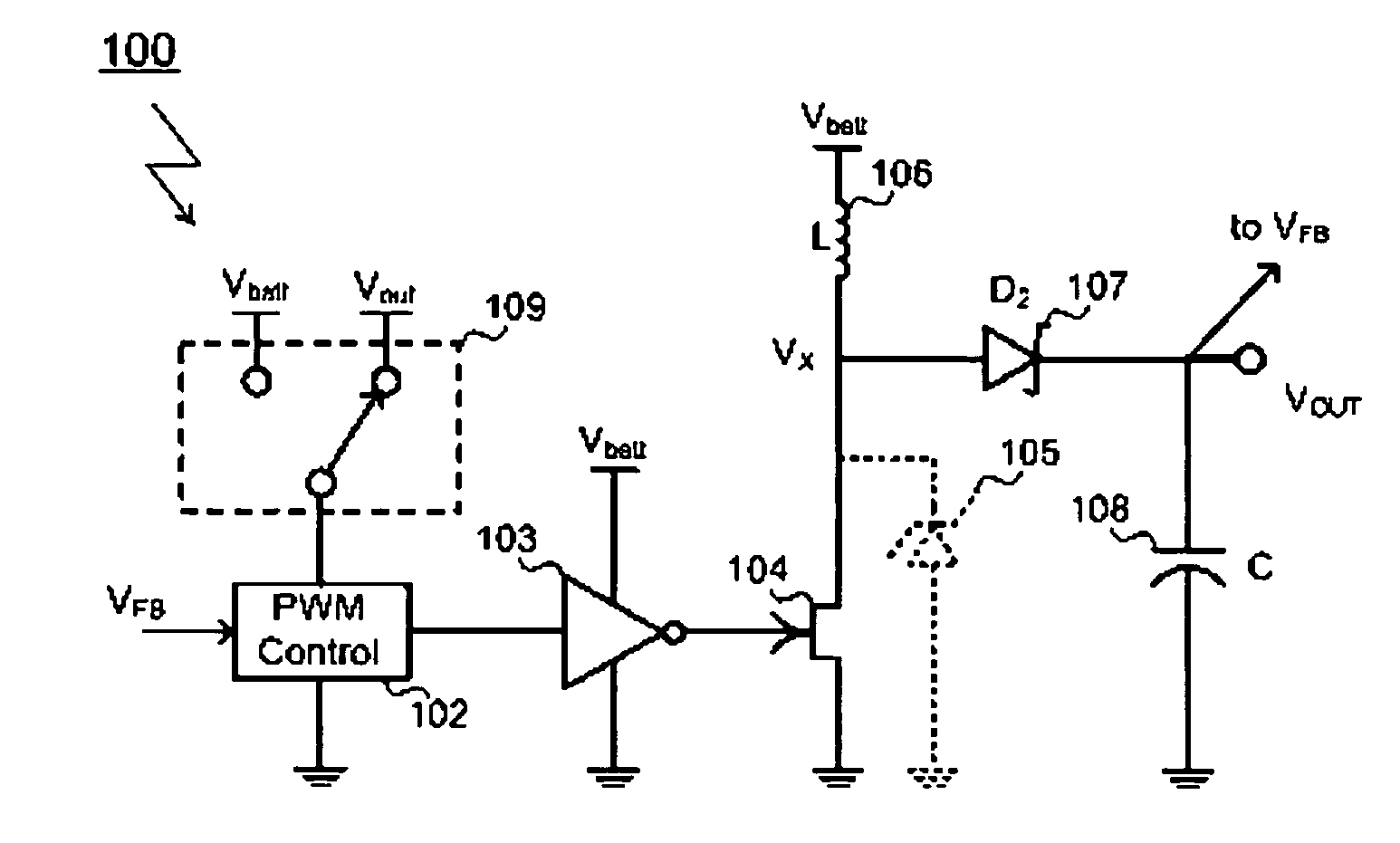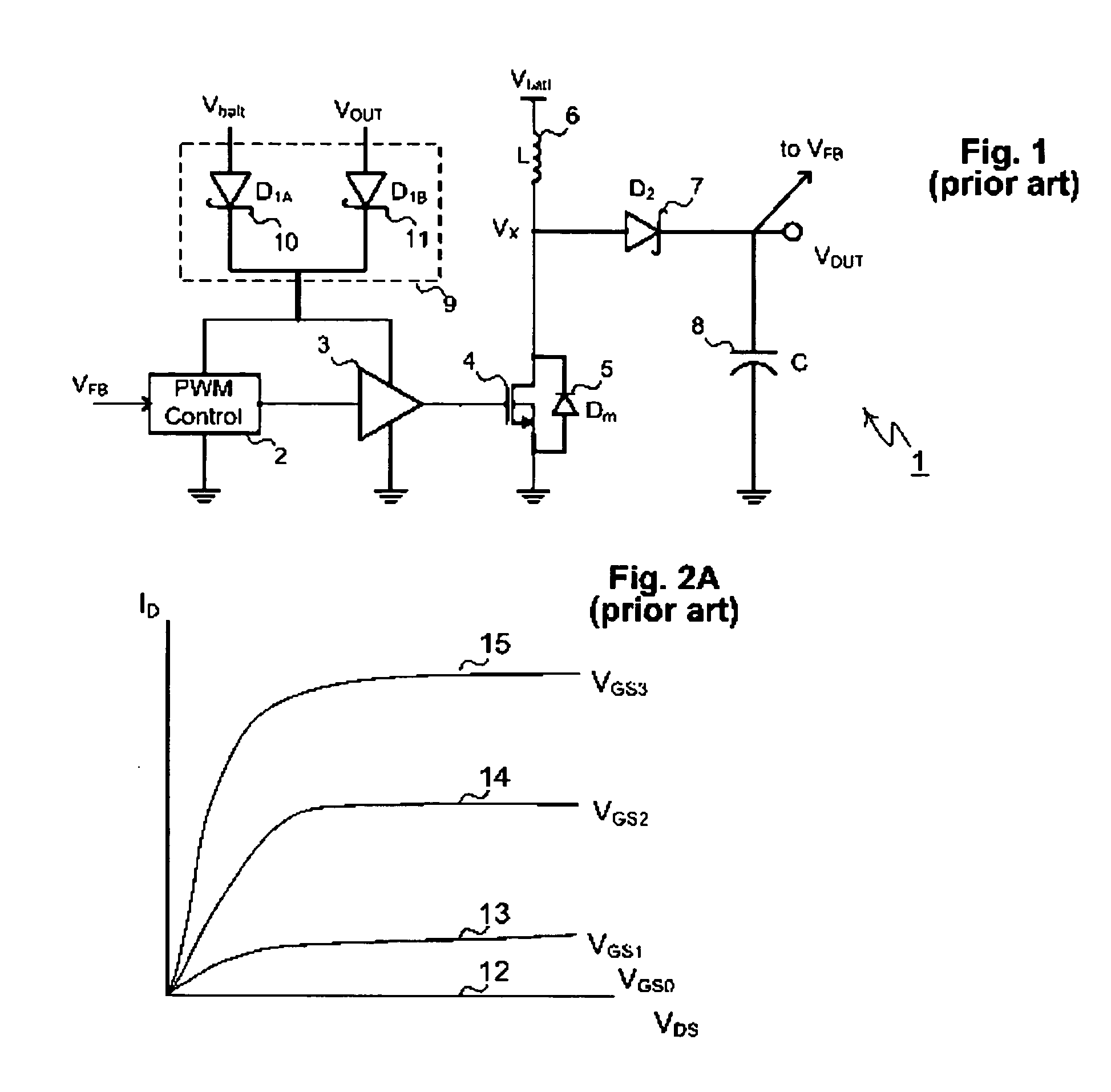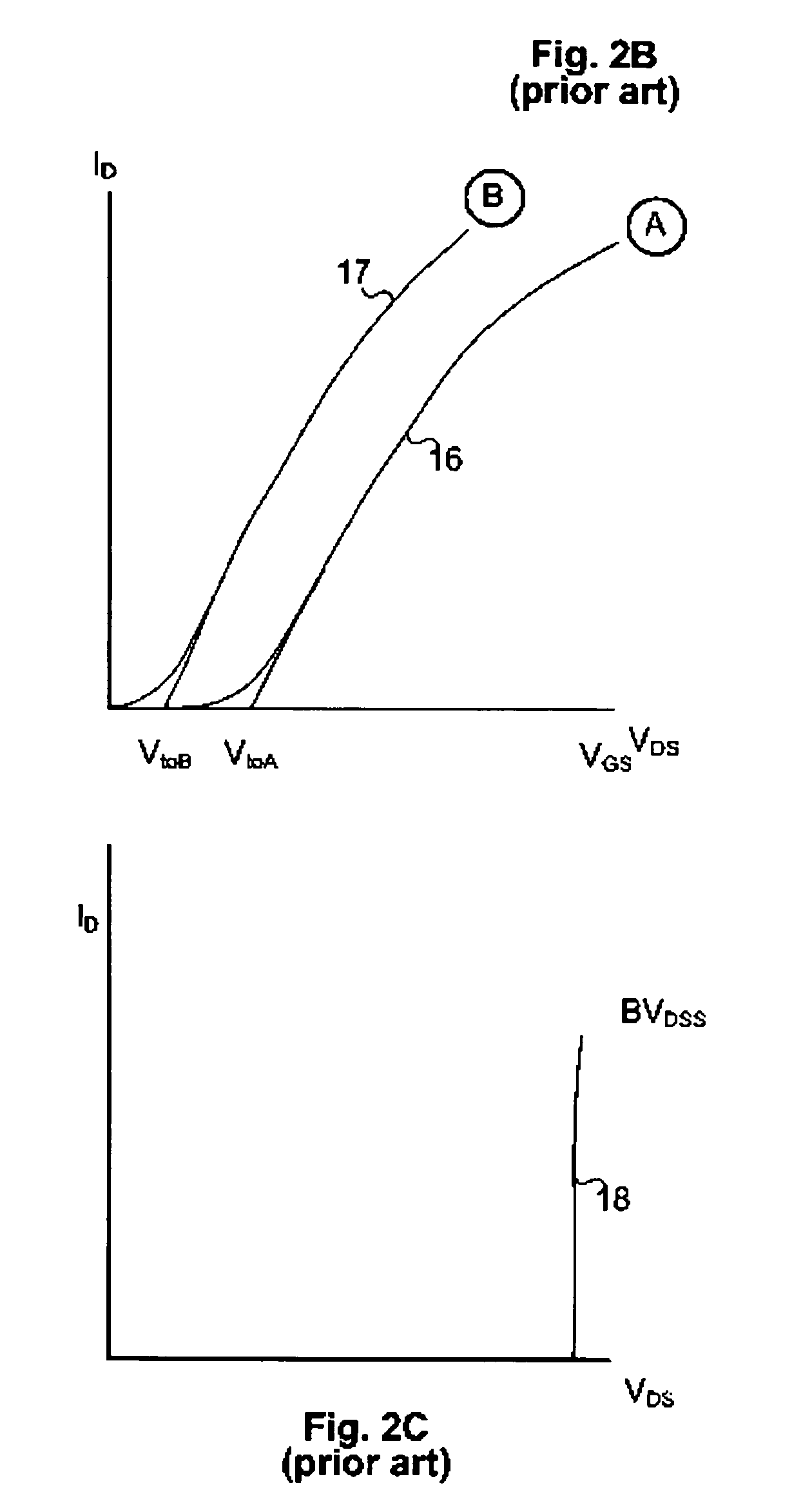High-Frequency Power MESFET Boost Switching Power Supply
a switching power supply and high-frequency technology, applied in the direction of pulse technique, process and machine control, instruments, etc., can solve the problems of power converter's efficiency, power device energy loss to self-heating, shorten battery life,
- Summary
- Abstract
- Description
- Claims
- Application Information
AI Technical Summary
Benefits of technology
Problems solved by technology
Method used
Image
Examples
Embodiment Construction
[0073]The present invention includes inventive matter regarding the use of a proposed power MESFET in switching power supplies. The proposed power MESFET is referred to in this document as a “type A” device. Before describing the use of the “type A” device in switching power supplies, a short description of the “type A” device is presented. A more complete description of the “type A” device and its applications is included the related patent applications previously identified.
[0074]FIG. 4D illustrates how the previously described “type B” depletion-mode device would need to be adjusted to make a power switch with useful characteristics (i.e., the “type A” device). Similar to an enhancement mode MOSFET, the proposed “type A” MESFET needs to exhibit a near zero value of IDSS current, i.e. the current IDmin shown as line 50 should be as low as reasonably possible at VGSO=0, i.e. where IDSS≈IDmin Biasing the Schottky gate with positive potentials of VGS1, VGS2, and VGS3 results in incre...
PUM
 Login to View More
Login to View More Abstract
Description
Claims
Application Information
 Login to View More
Login to View More - R&D
- Intellectual Property
- Life Sciences
- Materials
- Tech Scout
- Unparalleled Data Quality
- Higher Quality Content
- 60% Fewer Hallucinations
Browse by: Latest US Patents, China's latest patents, Technical Efficacy Thesaurus, Application Domain, Technology Topic, Popular Technical Reports.
© 2025 PatSnap. All rights reserved.Legal|Privacy policy|Modern Slavery Act Transparency Statement|Sitemap|About US| Contact US: help@patsnap.com



